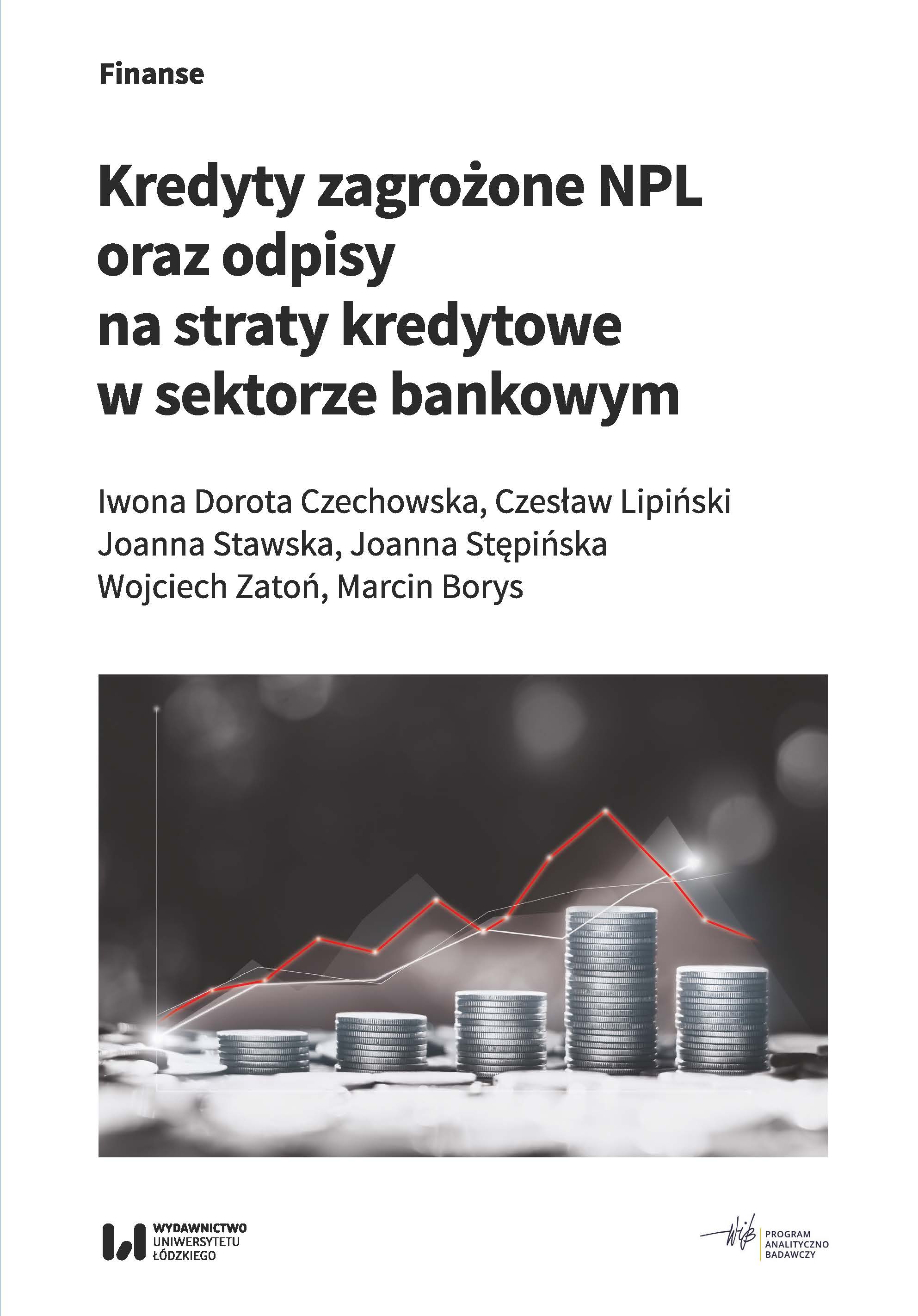Kredyty zagrożone NPL oraz odpisy na straty kredytowe w sektorze bankowym
Non-performing loans and allowance for loan losses in the banking sector
Author(s): Iwona Dorota Czechowska, Czesław Lipiński, Joanna Stawska, Joanna Stępińska, Wojciech Zatoń, Marcin Borys
Subject(s): Economy, Business Economy / Management
Published by: Wydawnictwo Uniwersytetu Łódzkiego
Keywords: banks; non-performing loans; credit policy; allowance for loan losses; loan loss forecasting
Summary/Abstract: Działalność kredytowa to obszar działalności bankowej, stanowiący główne źródło przychodów, powiązany z ryzykiem kredytowym, którego materializacja generuje straty dla wyniku finansowego i bazy kapitałowej pojedynczych instytucji kredytowych oraz stabilności systemu bankowego i finansowania gospodarki. Celem opracowania jest przedstawienie, ocena i prognozowanie strat kredytowych w sektorze bankowym w Polsce, w kontekście identyfikacji prawidłowości i trendów należności kredytowych, oraz zależności przyczynowo-skutkowych między wynikiem z tytułu oczekiwanych strat kredytowych a sytuacją gospodarczą. Strata kredytowa wg MSSF 9 stanowi różnicę między wszystkimi, wynikającymi z umowy kredytowej przepływami pieniężnymi należnymi jednostce i wszystkimi przepływami pieniężnymi, które jednostka spodziewa się otrzymać, dyskontowaną według pierwotnej efektywnej stopy procentowej. Straty kredytowe powstają w sytuacjach pogorszenia zdolności kredytowej oraz czynników po stronie instytucji kredytowej. Jako metodę badawczą zastosowano model prognostyczny, poprzedzony prezentacją czynników determinujących wynik ECL, a także wyznaczaniem wyniku ECL. Zidentyfikowano istotne zmienne makroekonomiczne a także określono założenia dla uwarunkowań makroekonomicznych w modelach oczekiwanych strat kredytowych. Przeprowadzona analiza wskazuje, że sektor bankowy dość skutecznie kontroluje poziom powstających strat kredytowych, na co wskazuje malejący trend wskaźnika NPL i stosunkowo łagodne przejście okresu związanego z pandemią COVID-19. Przyczynia się do tego ostrożna polityka kredytowa i zarządzanie należnościami z utratą wartości. Należy jednak zauważyć, że gwałtowne pogorszenie sytuacji makroekonomicznej w krótkim czasie będzie stanowić duży problem dla sektora bankowego.
/////
Credit activity is an area of banking activity, constituting the main source of income, associated with credit risk, the materialisation of which generates losses for the financial result and capital base of individual credit institutions and the stability of the banking system and the financing of the economy.The purpose of the study is to present, assess and forecast credit losses in the banking sector in Poland, in the context of identifying patterns and trends in credit claims, and the causal relationship between the outcome of expected credit losses and the economic situation.Credit loss according to IFRS 9 is the difference between all contractual cash flows due to the entity and all cash flows the entity expects to receive, discounted at the original effective interest rate. Credit losses arise in situations of deterioration in creditworthiness and factors on the part of the credit institution.A forecasting model was used as the research method, preceded by a presentation of the determinants of the ECL score, as well as the determination of the ECL score. Relevant macroeconomic variables were identified and assumptions were made for macroeconomic determinants in the expected credit loss models. The analysis conducted indicates that the banking sector has been quite effective in controlling the level of emerging credit losses, as indicated by the declining trend of the NPL ratio and the relatively smooth passage of the period associated with the COVID-19 pandemic. Prudent credit policies and impaired receivables management contribute to this. However, it should be noted that a sharp deterioration in the macroeconomic situation in the short term will pose a major problem for the banking sector.
- E-ISBN-13: 978-83-8331-415-0
- Print-ISBN-13: 978-83-8331-414-3
- Page Count: 190
- Publication Year: 2024
- Language: Polish
- Table of Content
- eBook-PDF

